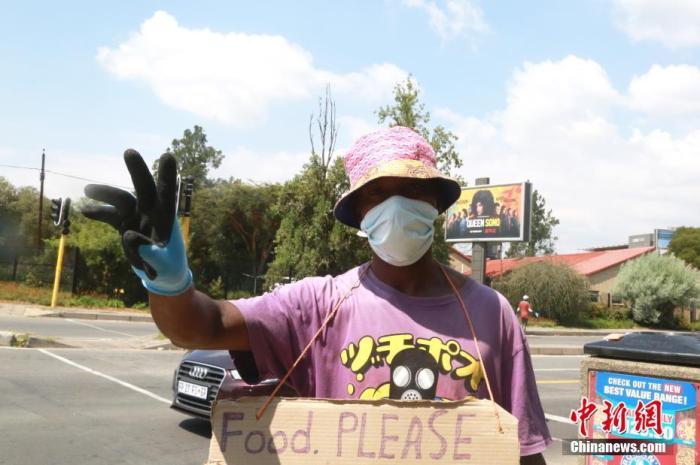China News Service, April 22, according to the United Nations website, many United Nations agencies said on the 21st that in 2019, a total of 135 million people in 55 countries and regions were in a state of food crisis. Affected by the new crown epidemic, by the end of 2020, the number of people in a food crisis may nearly double, with a total of more than 250 million.
Data map: On January 21, 2020 local time, in Larissaro village near Archers Post, Kenya, when young girls wearing traditional Samburu costumes ran across the herd, invading locusts emerged from the ground vegetation.
According to reports, the latest annual Food Crisis Report released on the 21st shows that of the 135 million people facing a food crisis in 2019, 73 million people are located in Africa, accounting for more than half of the total number of people, and another 43 million are distributed in the Middle East. And Asia, there are 18.5 million people living in Latin America and the Caribbean.
The report points out that of the 135 million people mentioned above, 77 million live in conflict areas, 34 million are affected by climate change, and another 24 million are hungry due to economic turmoil.
The report shows that Yemen, the Democratic Republic of Congo, Afghanistan, Venezuela, Ethiopia, South Sudan, Syria, Sudan, Nigeria and Haiti are the ten countries with the most severe global food crisis in 2019. The total number of hungry people is 88 million, accounting for 66% of the world ’s total. %.
On the 4th and 1st local time, a street performer wears protective masks and gloves in Johannesburg, South Africa. China News Agency reporter Wang Xishe
In addition, the report shows that there are 183 million people in the world in the "severe" state of food insecurity classification in 2019, and a little impact from the outside world-such as the raging new crown epidemic-will cause them to fall into "food" crisis".
The WFP predicts that if measures are not taken in time, the number of people facing food crises in the world will increase by another 130 million to 265 million under the influence of the epidemic.
Hussein Hu, senior economist at the WFP, said, "For millions of people in the world who are already at risk, the impact of the new crown epidemic may be disastrous. For tens of thousands of people, they can only eat if they work every day For the people, the epidemic is a heavy blow. The blockade measures and the global economic recession have exhausted their only savings ... We must act together to mitigate the impact of this global disaster. "
The report lists four urgently needed actions:
First, expand the remote food safety monitoring system in real time to provide up-to-date information on the impact of the epidemic on food security, livelihood, health, service access, and market supply, so as to take early response actions;
Second, based on the assessment of the impact of the epidemic, reserve critical humanitarian assistance and provide food, livelihood and nutrition assistance to vulnerable groups to ensure that their basic needs are fully met;
Third, strengthen and consolidate the social security system to ensure that vulnerable groups affected by the epidemic or facing high risks still have access to food;
Fourth, increase support for food processing, transportation and local markets, and call on countries to maintain open trade channels and ensure the continuous operation of key food supply chains and agricultural food systems in food crisis countries.
According to reports, the annual "Food Crisis Report" aims to assess the global food security and nutritional status, and is jointly released by the "Food Crisis Global Response Network" composed of a number of UN agencies and governments and non-governmental organizations.

